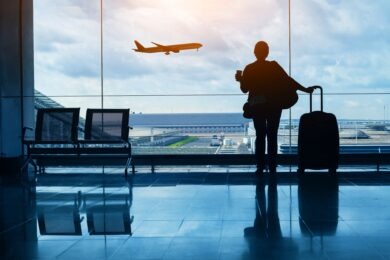One passenger described it as the “worst turbulence ever.” Over the weekend, an American Airlines flight from Athens, Greece, to Philadelphia, carrying 287 passengers, shook and dipped so violently that drinks flew to the ceiling and so did at least one passenger, according to news reports.
The seatbelt sign was on. Crew was in the midst of a beverage service.
In a passenger video, the captain of the plane can be heard apologizing over the P.A. system. “We were expecting some light turbulence; the plane in front of us didn’t report anything,” the captain says.
After 30 minutes of this, the jet landed safely in Philadelphia. Three passengers and seven crew members were taken to a hospital. All were subsequently released.
Every meeting professional has no doubt experienced in-flight turbulence. Most are no big deal. But extreme incidents such as this American flight are a good reason to review why they occur, and what you can do to minimize anxiety.
It’s the Jet Stream’s Fault
“Air tends to flow as a horizontal, snaking river called a jet stream,” British Airways pilot Steve Allright explained to The Telegraph. A jet stream can be thousands of miles long and flow up to 250 mph, but is usually only a few miles wide and deep. “Just like a fast-flowing river swirling against the riverbank, where the edge of the jet stream interacts with slower moving air, there may be some mixing of the air, which causes turbulence,” Allright says.
The Wings Won’t Fall Off
Wings will never snap off. And they’re designed to have flex, so if you look out the cabin window and see a wing flapping up and down a little, not to worry. Incidentally, experts say even engine failure will never result in a plane falling from the sky. All planes can make do with a single engine, and if both cut out, an aircraft at cruising altitude can glide for 70 miles in search of a place to land.
Take This Warning Seriously
We tend to ignore the crew members’ safety lecture—OK, you already know how to buckle a seatbelt. But one warning that should never be ignored is to keep your seatbelt fastened throughout the flight. Drinks hitting the ceiling in a sudden drop in altitude are one thing; you doing the same thing is quite another.
Mind Where You Sit
Sitting as far forward in the cabin as you can not only gets you off the plane sooner at your destination: It also minimizes the effects of turbulence.
Breathe and Squeeze!
At London’s Heathrow Airport, British Airways leads a fear-of-flying course. As reported In The Telegraph, passengers with turbulence jitters are urged to clench their buttocks and breathe deeply. The exercise forces blood flow to the brain—or distracts your attention, at least. “Turbulence is uncomfortable, but not dangerous. It is part of flying, and is not to be feared,” Allright says.





